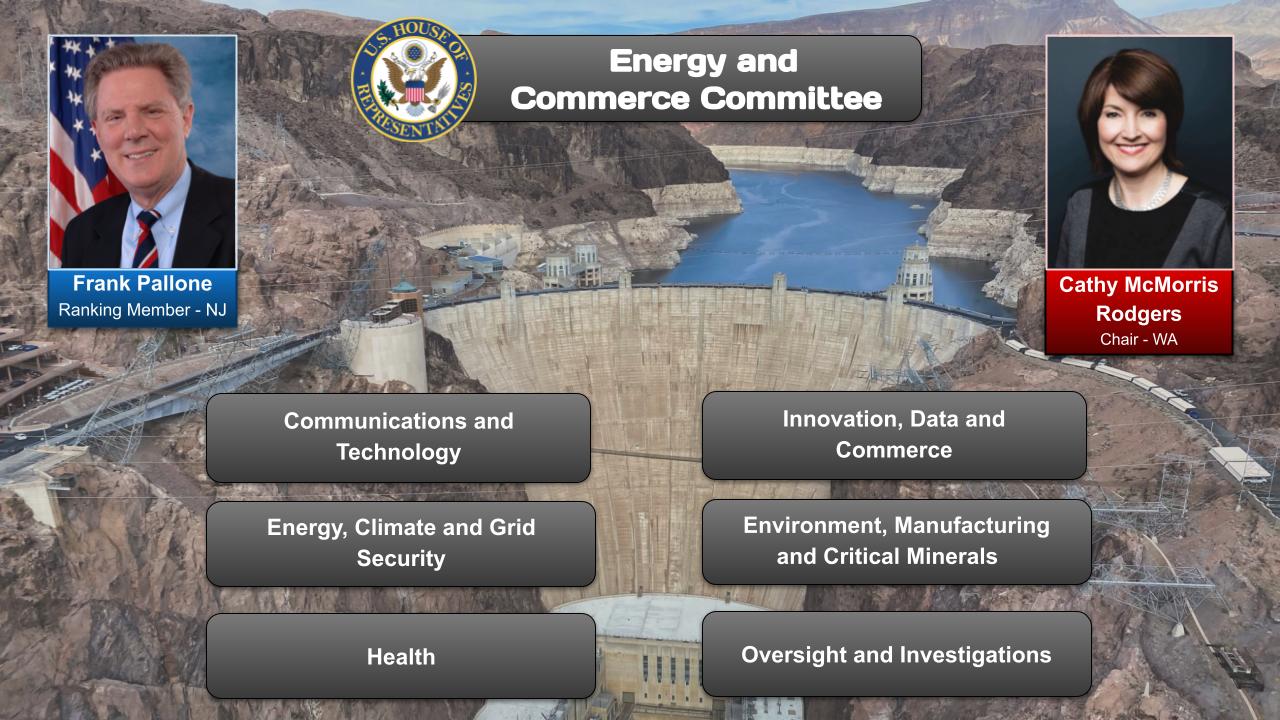Summary
This post on High Tech Manufacturing is 1 of 3 issues that US onAir curators are focusing on in the Economy & Jobs category.
Smart manufacturing is a broad category of manufacturing that employs computer-integrated manufacturing, high levels of adaptability and rapid design changes, digital information technology, and more flexible technical workforce training.Other goals sometimes include fast changes in production levels based on demand, optimization of the supply chain, efficient production and recyclability. In this concept, as smart factory has interoperable systems, multi-scale dynamic modelling and simulation, intelligent automation, strong cyber security, and networked sensors.
Source: Wikipedia
OnAir Post: High Tech Manufacturing
News
In our news wrap Thursday, House Democrats back $280 billion bill to bolster the U.S. semiconductor industry, parts of Appalachia faced flash flooding after days of rain, the Pacific Northwest heat wave persists, Russian said there no agreement yet on a prisoner swap, President Biden spoke with China’s president Xi Jinping about Taiwan, and Jet Blue agrees to by Spirit Airlines for $3.8 billion.
About
Check the Economy & Jobs post for the party positions, committees, government agencies related to High Tech Manufacturing and Economy & Jobs issues.
Challenges
. Innovation and Technological Advancement
- Rapidly evolving technologies and competitive market dynamics demand constant innovation.
- Limited access to skilled engineers and researchers with specialized knowledge.
- Pressure to keep up with technological trends and anticipate industry shifts.
2. Supply Chain Resilience
- Global supply chains are complex and susceptible to disruptions.
- Dependence on specialized materials and components from limited sources.
- Increasing need for resilient and agile supply chains to minimize operational risks.
3. Skilled Workforce Gap
- High demand for specialized skills in areas such as robotics, automation, and software development.
- Limited availability of qualified engineers, technicians, and operators.
- Need to attract, train, and retain top talent in a competitive market.
4. Rising Costs
- Increasing raw material and component costs, as well as energy and labor expenses.
- Pressure to maintain profitability while meeting customer demands.
- Need to optimize production processes and explore cost-saving initiatives.
5. Cybersecurity Threats
- High-tech manufacturing relies heavily on connected devices and data.
- Growing number of sophisticated cybersecurity threats targeting industrial systems.
- Need to implement robust security measures to protect sensitive data and prevent disruptions.
6. Regulatory Compliance
- Stringent industry regulations and certifications, such as ISO 9001 and AS9100.
- Complex compliance requirements can add time and cost to production processes.
- Need to adhere to regulatory standards while maintaining operational efficiency.
7. Sustainability and Environmental Concerns
- Focus on reducing environmental impact and promoting sustainability in production processes.
- Challenges in managing waste, energy consumption, and emissions.
- Pressure from stakeholders to adopt environmentally friendly practices.
8. Market Volatility
- Fluctuating demand and economic downturns can impact sales and profits.
- Need to adapt to changing market conditions and develop strategies to weather economic storms.
9. Global Competition
- High-tech manufacturing is a global industry with intense competition.
- Need to differentiate products, optimize supply chains, and manage costs to compete effectively.
10. Workforce Safety
- Complex machinery and hazardous materials pose safety risks to workers.
- Need to prioritize safety measures, implement best practices, and ensure a safe work environment.
Source: Google Search + Gemini + onAir curation
Solutions
1. Rapid Technological Change 2. Skills Gap and Talent Acquisition 3. Global Competition 4. Supply Chain Disruptions 5. Quality and Regulatory Compliance
Solutions:
1. Rapid Technological Change:
- Embrace Agile Manufacturing: Implement flexible production processes that can quickly adapt to new technologies and demands.
- Invest in Research and Development: Allocate resources to develop and adopt innovative technologies that enhance efficiency and productivity.
- Partner with Technology Providers: Collaborate with external experts to gain access to cutting-edge technology and expertise.
2. Skills Gap and Talent Acquisition:
- Train and Upskill Existing Employees: Provide training programs to upgrade skills and prepare them for emerging technologies.
- Attract and Retain Top Talent: Develop a competitive compensation and benefits package, create career development opportunities, and foster a positive work environment.
- Partner with Educational Institutions: Establish relationships with universities and colleges to promote internships, research collaborations, and talent pipelines.
3. Global Competition:
- Strengthen Supply Chains: Build resilient supply chains by diversifying suppliers, improving inventory management, and automating processes.
- Optimize Production Processes: Focus on lean manufacturing principles, automation, and data analytics to reduce costs and improve efficiency.
- Explore Emerging Markets: Consider expanding operations to new markets to access cheaper labor and resources.
4. Supply Chain Disruptions:
- Increase Inventory Levels: Maintain strategic stockpiles of critical materials to mitigate supply chain disruptions.
- Establish Alternative Suppliers: Identify backup suppliers and develop contingency plans to minimize disruptions.
- Enhance Communication and Visibility: Improve communication with suppliers and customers to anticipate and respond to potential issues.
5. Quality and Regulatory Compliance:
- Implement Quality Management Systems: Establish comprehensive quality control processes to ensure products meet specifications and regulatory requirements.
- Invest in Testing and Inspection Equipment: Utilize advanced testing and inspection equipment to detect defects and maintain quality standards.
- Comply with Certifications and Standards: Obtain relevant certifications (e.g., ISO 9001, AS9100) to demonstrate quality and regulatory compliance.
Source: Google Search + Gemini + onAir curation
Websites
General Resources
- NIST Manufacturing Extension Partnership (MEP): https://www.nist.gov/mep
- National Institute of Standards and Technology (NIST): https://www.nist.gov/
- Advanced Manufacturing National Program Office (AMNPO): https://www.energy.gov/eere/ampo
- Manufacturing USA: https://www.manufacturingusa.com/
Industry Associations
- Smart Manufacturing Leadership Coalition (SMLC): https://smartmanufacturingcoalition.org/
- National Association of Manufacturers (NAM): https://www.nam.org/
- SEMI: https://www.semi.org/
Education and Training
- National Science Foundation (NSF) Advanced Technological Education (ATE) Program: https://www.nsf.gov/funding/pgm_summ.jsp?pims_id=5456
- Community Colleges for Future Advanced Manufacturing (CCFAM): https://www.aacc.nche.edu/Programs-Services/CCFAM/
- Manufacturing Institute Learning Hub: https://www.themanufacturinginstitute.org/our-programs/learning-hub/
Technology and Innovation
- Manufacturing Technology Centers (MTCs): https://www.mfgtechceners.org/
- NIST Manufacturing Innovations Institute (MII): https://www.nist.gov/mii
- Advanced Manufacturing Office (AMO): https://energy.gov/eere/amo
Research and Development
- National Robotics Initiative (NRI): https://nri.nsf.gov/
- Defense Advanced Research Projects Agency (DARPA): https://www.darpa.mil/
- Sandia National Laboratories: https://www.sandia.gov/
Source: Google Search + Gemini + onAir curation
Legislation
See Congress.Gov links below for latest updates and for learning what bills your representatives are sponsoring.
Laws
Source: Google Search + Gemini + onAir curation
The America COMPETES Act (2007)
- Established the National Science Foundation (NSF) Advanced Manufacturing Partnerships to foster collaboration between industry, academia, and government in developing and commercializing advanced manufacturing technologies.
- Created the Manufacturing Extension Partnership (MEP) to provide technical assistance and support to small and medium-sized manufacturers.
2. The Revitalize American Manufacturing and Innovation Act (2014)
- Established the National Network for Manufacturing Innovation (NNMI) to support regional manufacturing innovation clusters focused on key technologies.
- Authorized funding for research and development in advanced manufacturing through the NSF, Department of Commerce, and Department of Energy.
3. The CHIPS and Science Act (2022)
- Allocated $52 billion in grants and incentives to semiconductor manufacturers to boost domestic chip production and reduce reliance on foreign imports.
- Invested $200 billion in research and development of emerging technologies, including artificial intelligence, quantum computing, and advanced materials.
4. The Infrastructure Investment and Jobs Act (2021)
- Allocated $110 billion for transportation infrastructure projects, including funding for electric vehicle charging stations and broadband expansion, which support advanced manufacturing supply chains.
- Invested in research and development of new materials and manufacturing processes through the Department of Transportation.
5. The Workforce Innovation and Opportunity Act (2014)
- Provided funding for job training and apprenticeship programs to address the skills gap in high-tech manufacturing.
- Established the “America’s Promise” program to connect manufacturers with educational institutions and prepare workers for the future of manufacturing.
6. The National Defense Authorization Act (NDAA)
- Annually authorizes funding for research and procurement of advanced manufacturing technologies for the U.S. military.
- Includes provisions to support the development of domestic manufacturing capabilities for critical defense components.
7. The Small Business Innovation Research (SBIR) and Small Business Technology Transfer (STTR) programs
- Provide funding to small businesses to conduct research and develop innovative technologies, many of which are applicable to high-tech manufacturing.
- Facilitate collaboration between small businesses and federal research agencies.
8. The Export-Import Bank Charter Act (2019)
- Reauthorized the Export-Import Bank, which provides financial assistance to U.S. exporters, including those in the high-tech manufacturing sector.
- Supports the sale of American-made goods and services to foreign markets.
New Bills
Source: Google Search + Gemini + onAir curation
CHIPS and Science Act (H.R. 4346)
- Provides $52 billion in grants and incentives to support domestic semiconductor manufacturing, research, and development.
- Aims to reduce reliance on foreign-made chips and strengthen the U.S. high-tech sector.
America COMPETES Act (H.R. 4521)
- Authorizes $10 billion annually for five years to strengthen American competitiveness in research and technology.
- Supports advanced manufacturing research, workforce development, and international cooperation.
Innovation and Competition Act (S. 1260)
- Includes provisions to address semiconductor supply chain vulnerabilities, promote technology transfer, and enhance research collaboration.
Workforce Innovation and Opportunity Act (H.R. 5376)
- Focuses on improving workforce development programs for high-tech industries.
- Provides funding for training, apprenticeship, and other programs to prepare Americans for high-demand jobs.
Manufacturing Workforce Development Act (H.R. 2941)
- Establishes a national network of manufacturing training centers to address skills gaps in high-tech manufacturing.
- Provides funding for industry-led apprenticeship programs and other initiatives.
Other Bills Related to High-Tech Manufacturing:
- NIST Technology Investment and Partnerships Act (H.R. 3613): Supports the National Institute of Standards and Technology (NIST) in its role as a hub for high-tech research and collaboration.
- National Science Foundation for the Future Act (S. 3265): Authorizes funding for the National Science Foundation (NSF) to support basic research in fields critical to high-tech manufacturing.
- Small Business Innovation Research and Small Business Technology Transfer Reauthorization Act (H.R. 477): Extends and enhances programs that support small businesses engaged in research and development.
- Advanced Manufacturing Partnership Act (S. 3317): Creates a public-private partnership to accelerate the adoption of advanced manufacturing technologies.
COMMITTEES, AGENCIES, & PROGRAMS
Advanced Manufacturing Technology Roadmap (MFGTech) Program
Source: NIST
The Advanced Manufacturing Technology Roadmap (MFGTech) Program consists of funding opportunities to develop technology roadmaps for promising advanced manufacturing clusters and to establish new, or strengthen existing, industry-driven consortia that address high-priority research challenges to grow advanced manufacturing in the United States. The most recent funding opportunity was on technology roadmapping in areas of critical interest to the nation, including technology areas appropriate for potential future Manufacturing USA institutes. The MFGTech program is run by the NIST Office of Advanced Manufacturing, which serves as the headquarters for the Advanced Manufacturing National Program Office and also oversees NIST-sponsored institutes, such as NIIMBL, and other NIST-funded awards to other Manufacturing USA institutes.
National Strategy for U.S. Leadership in Advanced Manufacturing
Source: Bureau of Standards
On the occasion of National Manufacturing Day, the White House released the National Strategy for Advanced Manufacturing. Manufacturing drives America’s economy and national security. To help the United States remain a global leader, the Biden-Harris administration is focused on efforts that revitalize the manufacturing sector, build strong U.S. supply chains, invest in research and development (R&D), and train the workforce that will secure our global economic position. This quadrennial strategy outlines a vision for the U.S. to lead in advanced manufacturing — to grow the economy, create jobs, enhance environmental sustainability, address climate change, ensure national security and improve health care.
Through collaboration across the public and private sectors, the following goals and strategic objectives will be pursued during the next four years.
Goals
- Develop and implement advanced manufacturing technologies.
- Grow the advanced manufacturing workforce.
- Build resilience into manufacturing supply chains and ecosystems.
Strategic Objectives
- Enable clean and sustainable manufacturing to support decarbonization.
- Accelerate manufacturing innovation for microelectronics and semiconductors.
- Implement advanced manufacturing in support of the bioeconomy.
- Develop innovative materials and processing technologies.
- Lead the future of smart manufacturing.
- Expand and diversify the advanced manufacturing talent pool.
- Develop, scale and promote advanced manufacturing education and training.
- Strengthen connections between employers and educational organizations.
- Enhance supply chain interconnections.
- Expand efforts to reduce supply chain vulnerabilities.
- Strengthen and revitalize advanced manufacturing ecosystems.
Each of the objectives has detailed recommendations outlined in the strategy. As part of this “whole of government” approach, the recent passage of the CHIPS and Science Act invests in semiconductor infrastructure and will help support several of the objectives. The Inflation Reduction Act, in combination with the infrastructure modernization investments in the Bipartisan Infrastructure Law, will provide resources and incentives to help reach the climate and clean energy objectives. The president’s Executive Order on Advancing Biotechnology and Biomanufacturing Innovation ensures a sustainable, safe and secure American bioeconomy.
Attaining these goals and objectives will require close collaboration across the U.S. government. Several agencies sponsor successful public-private partnerships, such as Manufacturing USA institutes (funded in part by the U.S. Departments of Commerce, Defense and Energy and with support from six additional federal agency partners) and Manufacturing Extension Partnership (MEP) centers (funded and run by the National Institute of Standards and Technology). These are national resources that support and strengthen U.S. manufacturing and will play key roles in delivering on this strategy. For example, the Manufacturing USA institutes partner with other organizations on advanced manufacturing technology development and education and workforce development. In FY 2021, educational and workforce programs across Manufacturing USA trained more than 90,000 people, encouraging many to pursue careers in manufacturing. The MEP program assists small and medium-sized manufacturers, which make up most manufacturing enterprises in the U.S.
By investing in American advanced manufacturing, we invest in American communities. As technology advances manufacturing, innovations enable new, improved methods for making products as well as development of new products that improve our lives. Advances in manufacturing enable the economy to continuously grow as new technologies and innovations increase productivity, enable next-generation products, support our capability to address the climate crisis, and create new, high-quality, and higher-paying jobs.
Read the plan and learn more about Manufacturing USA here
Committees
Source: Google Search + Gemini + onAir curation
enate Committees:
- Committee on Commerce, Science, and Transportation
- Subcommittee on Manufacturing, Trade, and Consumer Protection
- Committee on Banking, Housing, and Urban Affairs
- Subcommittee on Economic Growth, Entrepreneurship, and Regulatory Reform
- Committee on Finance
- Subcommittee on International Trade, Customs, and Global Competitiveness
House Committees:
- Committee on Science, Space, and Technology
- Subcommittee on Research and Technology
- Subcommittee on Manufacturing and Innovation
- Committee on Small Business
- Subcommittee on Innovation, Entrepreneurship, and Workforce Development
- Committee on Ways and Means
- Subcommittee on Trade
- Subcommittee on Oversight
Other Relevant Committees:
- Joint Economic Committee
- Monitors economic trends and makes recommendations to Congress
- House Committee on Economic Development, Policy, and Commerce
- Oversees federal programs that support economic development and business growth
- Senate Committee on Small Business and Entrepreneurship
- Advocates for small businesses and supports policies that promote entrepreneurship
Additional Key Committees with Jurisdictions Related to Specific High-Tech Manufacturing Challenges:
- House Committee on Armed Services (for defense-related manufacturing)
- Senate Committee on Homeland Security and Governmental Affairs (for cybersecurity and infrastructure security)
- House Committee on Energy and Commerce (for energy efficiency and renewable energy manufacturing)
- Senate Committee on Environment and Public Works (for environmental regulations and infrastructure development)
Government Agencies
Source: Google Search + Gemini + onAir curation
Primary Agencies:
- National Institute of Standards and Technology (NIST): Develops standards, metrics, and technologies for improving advanced manufacturing capabilities.
- Defense Advanced Research Projects Agency (DARPA): Funds research in cutting-edge technologies relevant to high-tech manufacturing, such as additive manufacturing and artificial intelligence.
- Manufacturing USA: A network of public-private partnerships that foster collaboration between industry, academia, and government to accelerate innovation in advanced manufacturing.
Supporting Agencies:
- National Science Foundation (NSF): Supports basic and applied research in fundamental technologies underlying high-tech manufacturing, such as materials science and computation.
- Department of Commerce: Promotes exports and competitiveness of US manufacturers through programs like the Manufacturing Extension Partnership.
- Department of Defense (DoD): Drives innovation in advanced manufacturing technologies through its procurement and research programs.
- Department of Energy (DoE): Supports research and development in energy-efficient and sustainable manufacturing processes.
- Environmental Protection Agency (EPA): Regulates environmental impacts of manufacturing facilities and promotes sustainable practices.
- National Aeronautics and Space Administration (NASA): Funds research in advanced manufacturing technologies for aerospace applications.
Interagency Collaboration:
- Advanced Manufacturing National Program Office (AMNPO): Coordinates efforts across government agencies to support high-tech manufacturing.
- National Network for Manufacturing Innovation (NNMI): Fosters collaboration between industry, academia, and government to address industry-driven challenges.
Programs & Initiatives
Source: Google Search + Gemini + onAir curation
. National Institutes of Standards and Technology (NIST) Hollings Manufacturing Extension Partnership (MEP)
- Provides technical assistance, training, and other support to small and medium-sized manufacturers to help them adopt advanced technologies and improve competitiveness.
2. Department of Commerce Advanced Manufacturing National Program Office (AMNPO)
- Coordinates federal efforts to support advanced manufacturing research, development, and innovation.
- Supports the National Network for Manufacturing Innovation (NNMI), a network of regional innovation hubs that collaborate on advanced manufacturing technologies.
3. Department of Defense (DoD) Manufacturing Technology Program (ManTech)
- Funds research and development projects to advance manufacturing technologies for defense applications.
- Facilitates technology transfer from the military to the commercial sector.
4. Small Business Innovation Research (SBIR) and Small Business Technology Transfer (STTR) Programs
- Provide funding to small businesses to conduct research and development on innovative technologies, including those relevant to high tech manufacturing.
- Encourage collaboration between small businesses and research institutions.
5. National Science Foundation (NSF) Advanced Manufacturing Initiative
- Supports research and education programs in advanced manufacturing technologies, such as additive manufacturing, robotics, and artificial intelligence.
6. Advanced Manufacturing Partnership (AMP)
- A government-industry partnership that brings together stakeholders to identify and address challenges in high tech manufacturing.
- Develops and coordinates resources, best practices, and workforce development programs.
7. Manufacturing USA
- A network of institutes funded by the DoD and the Department of Energy to support collaboration between industry, academia, and government on advanced manufacturing technologies.
- Focus areas include additive manufacturing, cybersecurity, and materials science.
8. National Aeronautics and Space Administration (NASA) Space Technology Mission Directorate (STMD)
- Develops advanced technologies for space exploration that have potential applications in high tech manufacturing, such as robotics, sensors, and materials.
9. Department of Energy (DOE) Advanced Manufacturing Office (AMO)
- Supports research and development on energy-efficient and sustainable manufacturing technologies.
- Funds projects in areas such as additive manufacturing, digital twin technologies, and advanced materials.
10. National Institute for Standards and Technology (NIST) Manufacturing Extension Partnership (MEP)
- Provides technical assistance, training, and other support to small and medium-sized manufacturers to help them adopt advanced technologies and improve competitiveness.
More Information
See Congress.Gov links below for latest updates and for learning what bills your representatives are sponsoring.
Nonpartisan Organizations
Source: Google Search + Gemini + onAir curation
Research and Advocacy Organizations:
- Institute for Advanced Manufacturing (IAM): Focuses on manufacturing innovation, workforce development, and policy analysis.
- National Center for Manufacturing Sciences (NCMS): Conducts research and provides technical assistance to enhance manufacturing competitiveness.
- Manufacturing Extension Partnership (MEP): A network of non-profit organizations that provide resources and support to small and medium-sized manufacturers.
Industry Associations:
- Association for Manufacturing Technology (AMT): Represents the precision metalworking industry and advocates for policies that foster manufacturing growth.
- National Tooling and Machining Association (NTMA): Represents the tooling and metalworking industry and provides educational and research programs.
- Robotics Industries Association (RIA): Promotes the development and adoption of automation and robotics technologies in manufacturing.
Academic and Government Initiatives:
- National Institute of Standards and Technology (NIST): Conducts research and develops standards for advanced manufacturing technologies.
- National Science Foundation (NSF): Provides funding and support for manufacturing research and education.
- Manufacturing USA: A public-private partnership that establishes institutes dedicated to advancing manufacturing in specific areas.
Nonprofit Organizations:
- SkillsUSA: A youth organization that promotes technical education and industry-recognized certifications in manufacturing.
- Manufacturing Skill Standards Council (MSSC): Develops and promotes industry-standard skill certification programs for manufacturers.
- Make48: A nonprofit that organizes competitions and workshops to encourage innovation and collaboration in manufacturing.
Other Key Initiatives:
- Advanced Manufacturing National Program Office (AMNPO): A federal office that coordinates and supports national efforts in advanced manufacturing.
- National Workforce Development Council for High-Tech Manufacturing (NWDC-HTM): A coalition of industry, education, and government leaders focused on workforce development for high-tech manufacturing.
Partisan Organizations
Source: Google Search + Gemini + onAir curation
Republican-Aligned Organizations:
- Semiconductor Industry Association (SIA): Advocates for policies that support the domestic semiconductor industry, including research and development, infrastructure, and workforce training.
- Information Technology Industry Council (ITI): Represents the technology industry, including high-tech manufacturing companies. It advocates for policies that foster innovation, growth, and international competitiveness.
- American Council on Science and Health (ACSH): Promotes sound science and health policies, including those related to advanced technologies and manufacturing.
Democratic-Aligned Organizations:
- American Federation of Labor and Congress of Industrial Organizations (AFL-CIO): The largest federation of unions in the United States, representing workers in various industries, including high-tech manufacturing. It advocates for policies that protect worker rights, create jobs, and promote fair trade.
- Democratic Socialists of America (DSA): A socialist organization that advocates for progressive policies, including investments in public infrastructure, education, and healthcare. It supports policies that foster a thriving and equitable high-tech manufacturing sector.
- Center for American Progress (CAP): A progressive think tank that conducts research and advocates for policies that address social and economic challenges. CAP focuses on policies that support high-tech manufacturing as a driver of economic growth and competitiveness.
“Smart manufacturing” (wiki)
Contents
| History of technology |
|---|
Smart manufacturing[1] is a broad category of manufacturing that employs computer-integrated manufacturing, high levels of adaptability and rapid design changes, digital information technology, and more flexible technical workforce training.[2] Other goals sometimes include fast changes in production levels based on demand,[3][1] optimization of the supply chain,[3] efficient production and recyclability.[4] In this concept, as smart factory has interoperable systems, multi-scale dynamic modelling and simulation, intelligent automation, strong cyber security, and networked sensors.
The broad definition of smart manufacturing covers many different technologies. Some of the key technologies in the smart manufacturing movement include big data processing capabilities, industrial connectivity devices and services, and advanced robotics.[5]


Big data processing
Smart manufacturing utilizes big data analytics, to refine complicated processes[clarification needed] and manage supply chains.[7] Big data analytics refers to a method for gathering and understanding large data sets in terms of what are known as the three V’s, velocity, variety and volume. Velocity informs the frequency of data acquisition, which can be concurrent with the application of previous data. Variety describes the different types of data that may be handled. Volume represents the amount of data.[8] Big data analytics allows an enterprise to use smart manufacturing to predict demand and the need for design changes rather than reacting to orders placed.[2]
Some products have embedded sensors, which produce large amounts of data that can be used to understand consumer behavior and improve future versions of the product.[9][10][11]
Advanced robotics
Advanced industrial robots, also known as smart machines, operate autonomously and can communicate directly with manufacturing systems. In some advanced manufacturing contexts, they can work with humans for co-assembly tasks.[12] By evaluating sensory input and distinguishing between different product configurations, these machines are able to solve problems and make decisions independent of people. These robots are able to complete work beyond what they were initially programmed to do and have artificial intelligence that allows them to learn from experience.[5] These machines have the flexibility to be reconfigured and re-purposed. This gives them the ability to respond rapidly to design changes and innovation, which is a competitive advantage over more traditional manufacturing processes.[13] An area of concern surrounding advanced robotics is the safety and well-being of the human workers who interact with robotic systems. Traditionally, measures have been taken to segregate robots from the human workforce, but advances in robotic cognitive ability have opened up opportunities, such as cobots, for robots to work collaboratively with people.[14]
Cloud computing allows large amounts of data storage or computational power to be rapidly applied to manufacturing, and allow a large amount of data on machine performance and output quality to be collected. This can improve machine configuration, predictive maintenance, and fault analysis. Better predictions can facilitate better strategies for ordering raw materials or scheduling production runs.
3D printing
As of 2019, 3D printing is mainly used in rapid prototyping, design iteration, and small-scale production. Improvements in speed, quality, and materials could make it useful in mass production[15][16] and mass customization.[16]
However, 3D printing developed so much in recent years that it is no longer used just as technology for prototyping. 3D printing sector is moving beyond prototyping especially it is becoming increasingly widespread in supply chains. The industries where digital manufacturing with 3D printing is the most seen are automotive, industrial and medical. In the auto industry, 3D printing is used not only for prototyping but also for the full production of final parts and products. 3D printing has also been used by suppliers and digital manufacturers coming together to help fight COVID-19.[17]
3D printing allows to prototype more successfully, thus companies are saving time and money as significant volumes of parts can be produced in a short period. There is great potential for 3D printing to revolutionise supply chains, hence more companies are using it. The main challenge that 3D printing faces is the change of people’s mindset. Moreover, some workers will need to re-learn a set of new skills to manage 3D printing technology.[17]
Eliminating workplace inefficiencies and hazards
Smart manufacturing can also be attributed to surveying workplace inefficiencies and assisting in worker safety. Efficiency optimization is a huge focus for adopters of “smart” systems, which is done through data research and intelligent learning automation. For instance operators can be given personal access cards with inbuilt Wi-Fi and Bluetooth, which can connect to the machines and a Cloud platform to determine which operator is working on which machine in real time.[18] An intelligent, interconnected ‘smart’ system can be established to set a performance target, determine if the target is obtainable, and identify inefficiencies through failed or delayed performance targets.[19] In general, automation may alleviate inefficiencies due to human error. And in general, evolving AI eliminates the inefficiencies of its predecessors.
As robots take on more of the physical tasks of manufacturing, workers no longer need to be present and are exposed to fewer hazards.[20]
Impact of Industry 4.0
Industry 4.0 is a project in the high-tech strategy of the German government that promotes the computerization of traditional industries such as manufacturing. The goal is the intelligent factory (Smart Factory) that is characterized by adaptability, resource efficiency, and ergonomics, as well as the integration of customers and business partners in business and value processes. Its technological foundation consists of cyber-physical systems and the Internet of Things.[21]
This kind of “intelligent manufacturing” makes a great use of:
- Wireless connections, both during product assembly and long-distance interactions with them;
- Last generation sensors, distributed along the supply chain and the same products (Internet of things)
- Elaboration of a great amount of data to control all phases of construction, distribution and usage of a good.
European Roadmap “Factories of the Future” and German one “Industrie 4.0″ illustrate several of the action lines to undertake and the related benefits. Some examples are:
- Advanced manufacturing processes and rapid prototyping will make possible for each customer to order one-of-a-kind product without significant cost increase.
- Collaborative Virtual Factory (VF) platforms will drastically reduce cost and time associated to new product design and engineering of the production process, by exploiting complete simulation and virtual testing throughout the Product Lifecycle.
- Advanced Human-Machine interaction (HMI) and augmented reality (AR) devices will help increasing safety in production plants and reducing physical demand to workers (whose age has an increasing trend).
- Machine learning will be fundamental to optimize the production processes, both for reducing lead times and reducing the energy consumption.
- Cyber-physical systems and machine-to-machine (M2M) communication will allow to gather and share real-time data from the shop floor in order to reduce downtime and idle time by conducting extremely effective predictive maintenance.
Statistics
The Ministry of Economy, Trade and Industry in South Korea announced on 10 March 2016 that it had aided the construction of smart factories in 1,240 small and medium enterprises, which it said resulted in an average 27.6% decrease in defective products, 7.1% faster production of prototypes, and 29.2% lower cost.[22]
See also
References
- ^ a b Lu, Yuqian; Xu, Xun; Wang, Lihui (July 2020). “Smart manufacturing process and system automation – A critical review of the standards and envisioned scenarios”. Journal of Manufacturing Systems. 56: 312–325. doi:10.1016/j.jmsy.2020.06.010. S2CID 225557967.
- ^ a b Davis, Jim; Edgar, Thomas; Porter, James; Bernaden, John; Sarli, Michael (2012-12-20). “Smart manufacturing, manufacturing intelligence and demand-dynamic performance”. Computers & Chemical Engineering. FOCAPO 2012. 47: 145–156. doi:10.1016/j.compchemeng.2012.06.037.
- ^ a b SMLC 2011
- ^ Shipp, Stephanie S. (March 2012). “Emerging Global Trends in Advanced Manufacturing” (PDF). Emerging Global Trends in Advanced Manufacturing. Institute for Defense Analysis. Archived from the original (PDF) on 2012-06-06. Retrieved 2020-04-12.
- ^ a b “On the Journey to a Smart Manufacturing Revolution”. www.industryweek.com. 2015-12-30. Retrieved 2016-02-17.
- ^ Albus, James S. (1995-01-01), English: Architecture for the NBS Automated Manufacturing Research Facility (AMRF)., retrieved 2016-03-04
- ^ Rachuri, Sudarsan (February 4, 2014). “Smart Manufacturing Systems Design and Analysis” (PDF). National Institute of Standards and Technology. Retrieved February 16, 2016.
- ^ Leveling, J.; Edelbrock, M.; Otto, B. (2014-12-01). “Big data analytics for supply chain management”. 2014 IEEE International Conference on Industrial Engineering and Engineering Management. pp. 918–922. doi:10.1109/IEEM.2014.7058772. ISBN 978-1-4799-6410-9. S2CID 31872187.
- ^ Yang, Chen; Shen, Weiming; Wang, Xianbin (January 2018). “The Internet of Things in Manufacturing: Key Issues and Potential Applications”. IEEE Systems, Man, and Cybernetics Magazine. 4 (1): 6–15. doi:10.1109/MSMC.2017.2702391. S2CID 42651835.
- ^ Porter, Michael E. (November 2014). “How Smart, Connected Products Are Transforming Competition”. Harvard Business Review. April 2016.
- ^ “Building Smarter Manufacturing With The Internet of Things (IoT)”. IT World Canada. Lopez Research. 2014. Retrieved 2020-04-12.
- ^ Wang, W.; Li, R.; Chen, Y.; Diekel, Z.; Jia, Y. (2019). “Facilitating Human-Robot Collaborative Tasks by Teaching-Learning-Collaboration From Human Demonstrations”. IEEE Transactions on Automation Science and Engineering. 16 (2): 640–653. doi:10.1109/tase.2018.2840345. ISSN 1545-5955.
- ^ “Robotic Systems for Smart Manufacturing”. www.nist.gov. US Department of Commerce. October 2013. Retrieved 2016-03-04.
- ^ Bicchi, Antonio; Peshkin, Michael A.; Colgate, J. Edward (2008-01-01). “Safety for Physical Human–Robot Interaction”. In Siciliano, Bruno; Khatib, Oussama Khatib (eds.). Springer Handbook of Robotics. Springer Berlin Heidelberg. pp. 1335–1348. doi:10.1007/978-3-540-30301-5_58. ISBN 9783540239574.
- ^ Zimmermann, Stefan (March 26, 2018). “Industry 4.0 – 3D Printing in Manufacturing Industries”. Atos Blog. Atos SE. Retrieved 2019-06-09.
- ^ a b Hughes, Andrew (Mar 23, 2017). “Industry 4.0 is About More Than Data: 3D Printing in Manufacturing”. Digital Transformation and Operational Excellence Blog. LNS Research. Retrieved 2019-06-09.
- ^ a b Wilson, Georgia (May 16, 2020). “The evolution of 3D printing in manufacturing”. Manufacturing Global. BizClick Medial Limited. Retrieved 2021-06-04.
- ^ “ThingTrax”. ThingTrax Connected Manufacturing. London. Archived from the original on 2017-04-12. Retrieved 2020-04-12.
- ^ Jung, Kiwook (2015-03-16). “Mapping Strategic Goals and Operational Performance Metrics for Smart Manufacturing Systems”. Procedia Computer Science. 44 (44 p.184–193): 184–193. doi:10.1016/j.procs.2015.03.051.
- ^ Louchez, Alain (January 6, 2014). “From Smart Manufacturing to Manufacturing Smart”. www.automationworld.com. Automation World. Retrieved 2016-03-04.
- ^ Jacinto, Joan (July 31, 2014). “Smart Manufacturing? Industry 4.0? What’s It All About?”. The Vault – Siemens Totally Integrated Automation.
- ^ Jung Min-hee (March 11, 2016). “Smart Factories Improving Productivity of SMEs”.
External links
- CESMII – US National Institute on Smart Manufacturing
- Factories of the Future
- Agnieszka Radziwon, Arne Bilberg, Marcel Bogers, Erik Skov Madsen. The Smart Factory: Exploring Adaptive and Flexible Manufacturing Solutions – Proceedings of the 24th DAAAM International Symposium on Intelligent Manufacturing and Automation, 23–26 October 2013, Zadar, Croatia. – Elsevier, Procedia Engineering, ISSN 1877-7058, 69 (2014), 1184–1190
- Agnieszka Radziwon, Marcel Bogers, Arne Bilberg. The Smart Factory: Exploring an Open Innovation Solution for Manufacturing Ecosystems Date Written: May 28, 2014. Available at SSRN, 11 Pages. Posted: 1 Oct 2014
- GE launches ‘microfactory’ to co-create the future of manufacturing

















